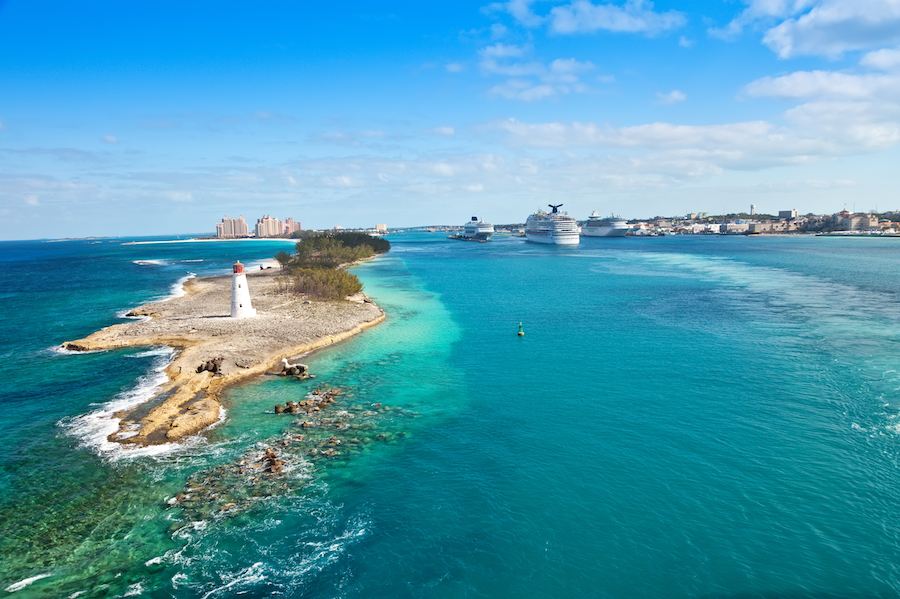Written by: Arielle Gray
You don’t tame the sea. You learn how to ride it the way birds take to wind.
This concept is a way of life in the Caribbean. The Bahamas is a place where ships wrecked on the rocks and reefs, an inevitable, lush green stop on the Trans Atlantic slave trade.
Many view the islands as a beautiful getaway but the spirit of resistance, a spell turned solid at Junkanoo or in the villages and towns crafted by freed slaves, is why anyone learning more about the history of the African Diaspora should visit.
It’s a story of living within the reach of God’s hand. Of springing life back out of the sea.
I went to the Bahamas in the last week of August. It was a trip myself and my best friend spent months and months planning and saving for. We had five sun drunk days in Nassau and somehow managed to get out on a flight that skirted the oncoming winds of Hurricane Dorian.
Wanting to learn more history, we were lucky enough to connect with the Ministry of Tourism before we left. The audacious spirit of revolt is stamped across the African Diaspora. If you’re Jamaican like me, you know Queen Nanny, the black woman who organized freed slaves in an ongoing series of revolts against the British. Haiti made global history when they revolted against the French, establishing the first free Black nation in the Americas.
Our first stop was the Educulture Museum and Resource Center in Nassau. Founded by Arlene Nash Ferguson in 2000, the museum serves as a physical space that embodies the spirit and history of the Bahamian Junkanoo festival. The building, on a parcel of land her great-grandfather bought in 1900, houses bursts of color in the form of Junkanoo costumes. Many of them belong to Ferguson herself, who has participated in the Junkanoo festival since she was four years old.
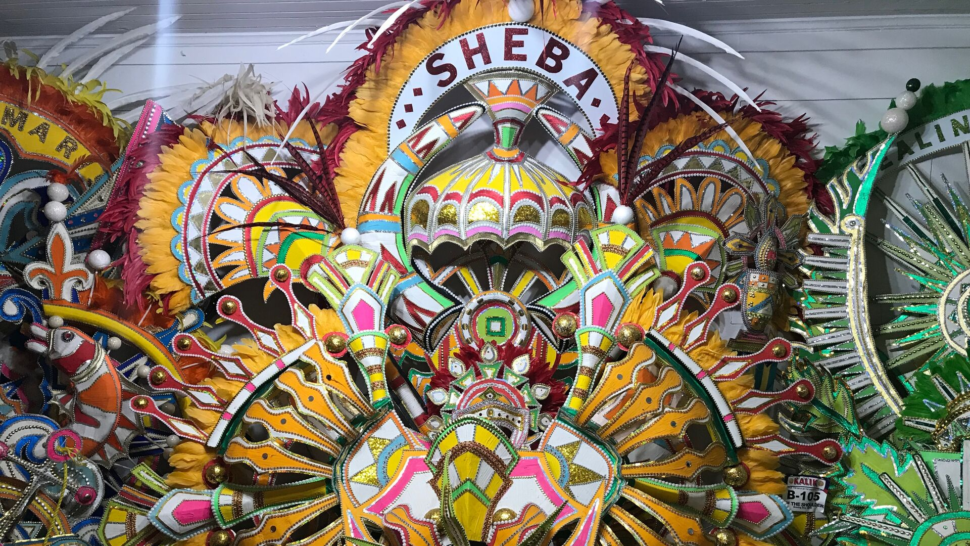
As a Jamaican, I’m familiar with the brightly colored costumes, the elaborate headdresses, and feathered embellishments of Carnival, Barbados’ Cropover, J’ouvert, or the many other Caribbean festivals celebrating emancipation and freedom. Junkanoo has a similar history. While there’s debate concerning the origin of the name, the celebration, which takes place between Christmas and the first of January, commemorates the days off that the slave masters would give their slaves for the holiday. The slaves used this respite to recreate festivals resembling those of their various homes in West Africa, like the Homowo Harvest Festival of the Ga people or the masked, robbed dancing of the Egungun in Benin.
Junkanoo costumes didn’t start off as overtly colorful, elaborate affairs, however. Slaves had to source their materials from their environment and employed straw to create intricately woven costumes, crafted suits made from sea sponges and even made some from newspaper scraps. This was an additionally subversive statement as slaves weren’t allowed to read and could’ve been punished if found with newspaper. Today, modern Junkanoo participants craft costumes from crepe paper, using cardboard stencils, wire and supports to build pieces that can weigh over 100 lbs.

Each year, Junkanoo jubilantly proceeds down Bay Street in Downtown Nassau.
Our next stop was the Pompey Museum of Emancipation and Slavery, which also sits right on Bay Steet. It’s at the Vendue House, an old site where slaves were sold or auctioned off. Now, the vividly painted exterior of the museum is a corporeal reminder of the Bahamian push against British colonialism.
Here, we’re reminded of water. The curator of the museum points us to a diorama of the wreck of the slave ship, Peter Mowell, at Lynard Cay. The American owned ship was attempting to avoid what they thought was a Royal Navy Ship.
“Slavery was already outlawed in the British colonies by then,” he pointed out. “But the Peter Mowell, in an ironic twist of fate, struck the shore of Lynyard Cay. Bahamians helped those aboard get to shore. Almost 400 Africans, who would’ve been sold into slavery in the United States, found freedom in the Bahamas.”
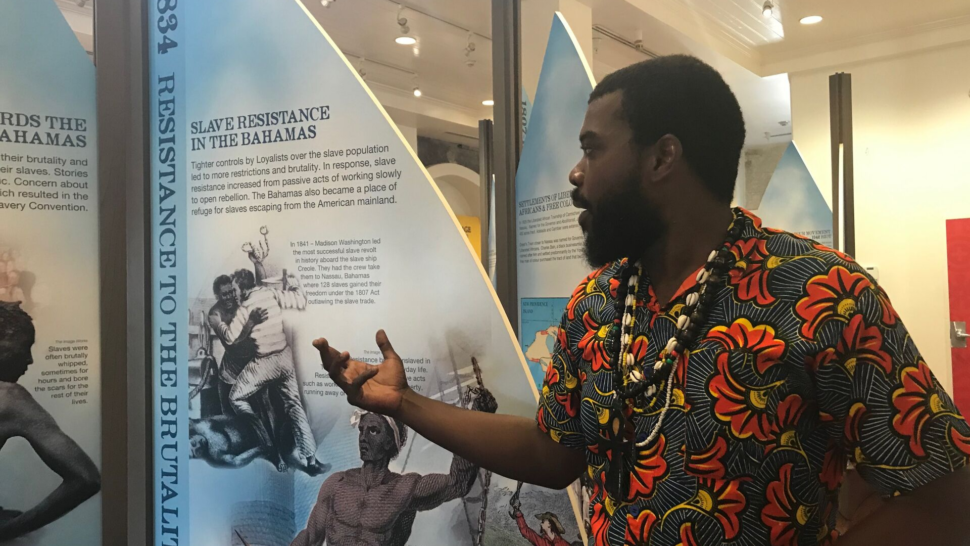
Bahamians coming to the rescue of those on slave ships wasn’t an anomaly. Bahamian mariners were known to construct fake lighthouses and utilize other methods to urge slave ships to run ashore. Because of the Bahamas’ proximity to the United States, the islands were often seen as safe havens from the terrors of slavery, which wasn’t outlawed in the U.S. until 1865. “And then there’s the Creole,” the curator says. “It was transporting slaves from Virginia to New Orleans but they revolted and took control of the vessel. They knew about the Hermosa, another slave ship that wrecked on the islands at Abaco. They knew that sailing to the Bahamas meant freedom.”
So that’s what they did. When the Creole landed in Nassau, the ship was boarded by the harbormaster and his crew who were all Black Bahamians. They told the slaves to evacuate immediately. They were free. Descendants of both the Creole and the Peter Mowell still live in Nassau and across the Bahamas.
The water has always taken life. But somehow, the Bahamas has always been the receiver of it too. Our last stop touched on this point. Bahamian artist and sculptor Antonious Roberts carves figures from wood, all sourced from the islands. They rise from a rocky peninsula along the beach of the massive Atlantis resort on Paradise Island. Roberts walks along with us to the site. “These figures are carved from local wood, the Madeira tree,” he says.
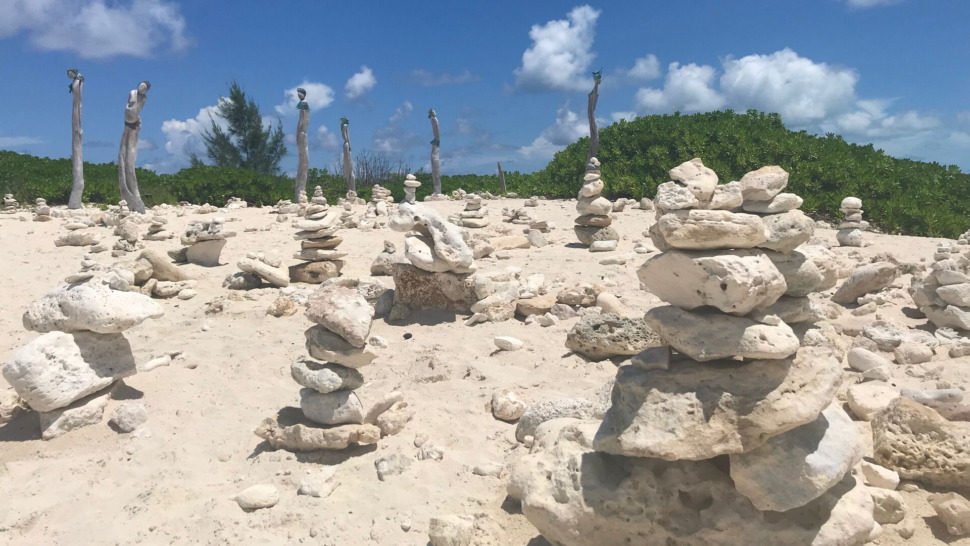
Roberts has a profound interest in the Bahamian environment and uses his art to tell a story of transformation and preservation. “I use the opportunity to gather the broken wood after storms,” he says. “I reuse them. That adds to the power of the work. The whole process is guided by the old belief that the spirit lives in all things. Wood is one of those things.”
The tall, elegant sculptures are feminine in form but represent Bahamian history and resilience and, perhaps most importantly, the give and take relationship the islands have with the sea. The wood is exposed to and weathered by water. But still, the space is sacred.
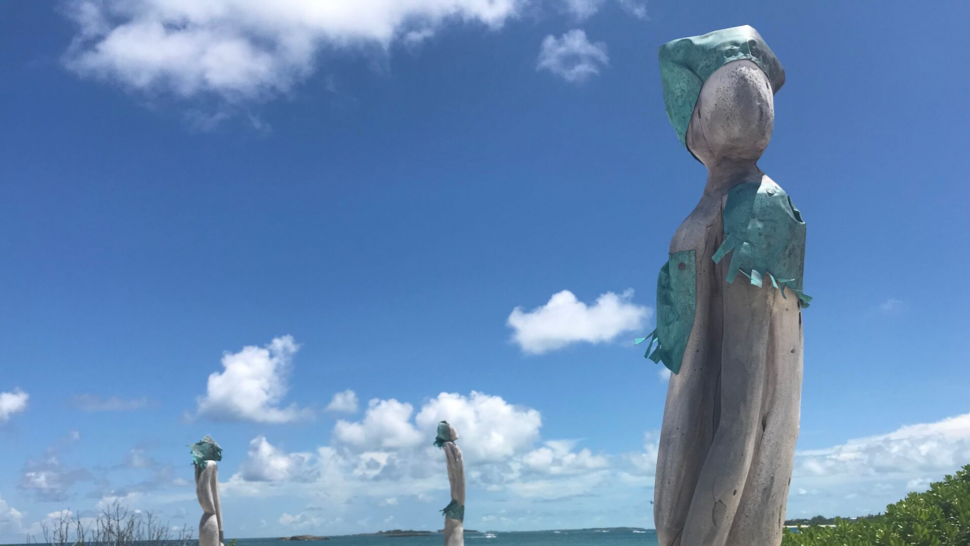
While the beach is a getaway for Atlantis hotel guests, many locals, who work in the area or at the hotel, visit “Sacred Space.” Around the sculptures, stacked towers of white stone spring from the sand.
When asked if these are also a part of his work, Roberts shakes his head. “No. But perhaps someone felt moved to put them here.”
